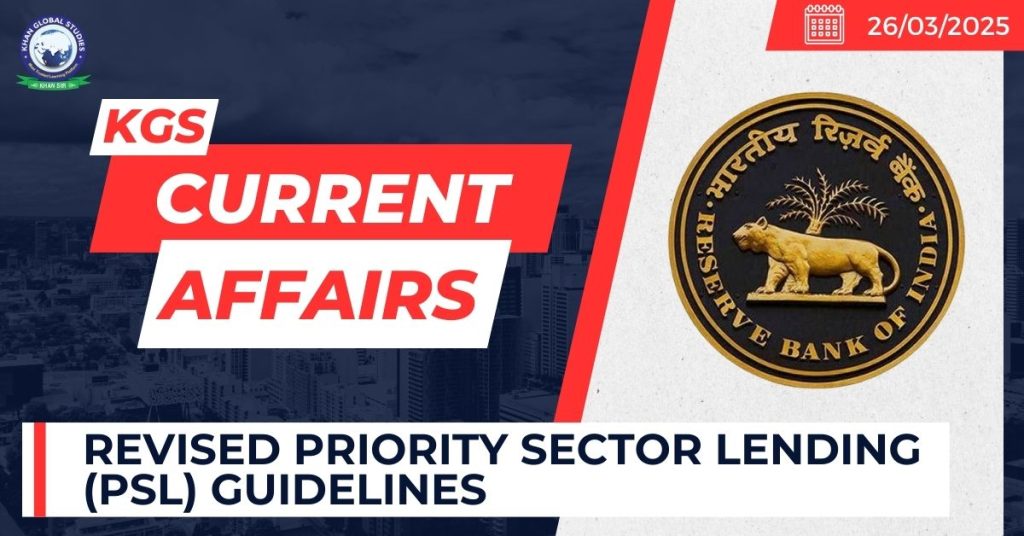Context:
Recently, the Reserve Bank of India (RBI) has revised guidelines for Priority Sector lending (PSL).
More on the News
- The revised framework, which replaces the 2020 directions, seeks to improve access to credit for essential sectors of the economy while ensuring financial institutions meet their social responsibility targets.
- The revised PSL guidelines will come into effect from April 1, 2025.
- The updated rules apply to all commercial banks, Regional Rural Banks (RRBs), Small Finance Banks (SFBs), Local Area Banks (LABs), and Primary (Urban) Co-operative Banks (UCBs), with the exception of Salary Earners’ Banks.
Key changes of the revised Priority Sector Lending (PSL) Guidelines
Housing loans have been increased to provide greater financial access for individuals, particularly in urban and rural areas.
Bank loans to the housing sector for priority sector classification have been prescribed in three categories –
- ₹50 lakh (centres with a population of 50 lakh and above)
- ₹45 lakh (centres with a population of 10 lakh and above but below 50 lakh)
- ₹35 lakh (centres with a population below 10 lakh).
RBI has broadened the purposes for which loans can be classified under the ‘Renewable Energy’ category, encouraging investments in clean energy projects.
The PSL target for Urban Cooperative Banks (UCBs) has been revised to 60% of Adjusted Net Bank Credit (ANBC) or Credit Equivalent of Off-Balance Sheet Exposures (CEOBSE), whichever is higher.
- Adjusted Net Bank Credit (ANBC) is a metric used by the Reserve Bank of India (RBI) to determine the minimum lending targets for banks in priority sectors.
The framework also expands the list of eligible borrowers under the ‘Weaker Sections’ category.
The existing cap on loans given by UCBs to individual women beneficiaries has been removed.
Priority Sector Lending (PSL)
PSL was formalized in 1972 and is now regulated by the Reserve Bank of India (RBI), which mandates banks to allocate a portion of their lending to specific sectors of the economy
There are eight broad sectors within priority sector lending: Agriculture, Micro, Small and Medium Enterprises (MSMEs), Export Credit, Education, Housing, Social Infrastructure, Renewable Energy, and Others.
The RBI guidelines on PSL mandate a target of 40% of ANBC or CEOBSE, whichever is higher, for domestic Scheduled Commercial Banks and Foreign Banks with 20 branches and above.
- Within this, sub-targets of 10% and 18% of ANBC or Credit Equivalent amount of OBE, whichever is higher, as of preceding March 31st, have been mandated for lending to weaker sections and Agriculture respectively.
- Further, within the 18% target for agriculture, a sub-target of 8% has been prescribed for Small and Marginal Farmers.
Regional Rural Banks (RRBs) and Small Finance Banks (SFBs) have a higher target of 75%, ensuring greater credit flow to rural and small-scale enterprises.
Banks can fulfill their Priority Sector Lending (PSL) requirements by giving loans, offering credit, and providing financial services to individuals, businesses, and organizations in key sectors.
If banks don’t meet their PSL targets, they must contribute the required amount to the Rural Infrastructure Development Fund (RIDF) at NABARD or other funds managed by NABARD, SIDBI, National Housing Bank, or as directed by the RBI.

